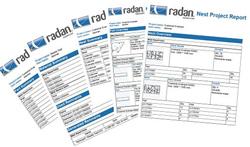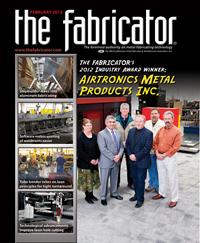General Manager, Americas
- FMA
- The Fabricator
- FABTECH
- Canadian Metalworking
Categories
- Additive Manufacturing
- Aluminum Welding
- Arc Welding
- Assembly and Joining
- Automation and Robotics
- Bending and Forming
- Consumables
- Cutting and Weld Prep
- Electric Vehicles
- En Español
- Finishing
- Hydroforming
- Laser Cutting
- Laser Welding
- Machining
- Manufacturing Software
- Materials Handling
- Metals/Materials
- Oxyfuel Cutting
- Plasma Cutting
- Power Tools
- Punching and Other Holemaking
- Roll Forming
- Safety
- Sawing
- Shearing
- Shop Management
- Testing and Measuring
- Tube and Pipe Fabrication
- Tube and Pipe Production
- Waterjet Cutting
Industry Directory
Webcasts
Podcasts
FAB 40
Advertise
Subscribe
Account Login
Search
Integrating nesting software into MRP systems
The automated exchange of information saves production time, eliminates needless mistakes
- By Doug Wood
- February 13, 2012
- Article
- Shop Management

Figure 1: The word dynamic often is used to describe the capability of nesting software to keep up with the variety and complexity of 2-D parts that will be cut from a blank and the constant change of work associated with a job shop. Such nesting software is really put to the test when it is integrated with a fabricator’s manufacturing resources planning system, which automates the flow of information directly from the front office to the shop floor.
Nesting systems are a lot like Formula 1™ race cars: They are extremely fast and efficient, and just when you think they couldn’t go any faster, they manage to improve their performance.
For the race cars, the mechanic attempts to coax an extra mile or two per hour out of the engine. In the case of nesting software, developers want to squeeze an extra 1 or 2 percent of material utilization out of each blank.
But that’s only half the battle. Connecting the nesting software with the rest of the business holds plenty of potential. For many shops, that means integrating the nesting software with the manufacturing resources planning (MRP) system.
Before any such software migration begins, however, a metal fabricator should ask some critical questions about the nesting software:
- How well does the nesting system communicate with the MRP system?
- Because we are talking about full-blown connectivity in the company, can the nesting software interact with other shop floor systems?
- Can the nesting software accommodate that rush job our best customer is waiting for?
The effort to connect these software systems may seem daunting, but the potential benefits are a just reward. For instance, such an integration saves time in building the schedule within the nesting system (see Figure 1); the schedule doesn’t have to be produced in one software system and then transferred into another. This automated exchange of information helps metal fabricators to produce the parts they need, when they need them, while also reducing the potential for human error.
In addition, a properly integrated system can accurately gauge how much material will be used to fulfill an order and predict delivery times because machine schedules are part of the automated calculations.
Interested in the Integration?
The metal fabricator interested in connecting these two software systems should start with the basics. For example, simple job files with limited information, such as part name, quantity, priority or due date, orientation, and the material information, can be released for manufacturing as part of a manual process or as a regularly timed event. If the manufacturing is released from the MRP as part of a schedule, company management might want to choose two hours as the time interval; that way the nesting software imports the latest manufacturing requirements in a timely fashion, but real-time information does not overwhelm shop floor activities.
Creating a live connection between the nesting system and the MRP system could complicate things. A metal fabricator could run into challenges maintaining the connection. It also can complicate the ability to make changes—such as adding a simple field to the exchange—down the line. A major change like that to a real-time system can become a costly task.
Most nesting systems now can automate the data exchange—identifying parts already in the system and preparing the 2-D or 3-D files if they are new. The nesting application can be programmed to watch for any new files released for production and make them available for nesting. In some instances, the software automatically unfolds the parts or performs necessary steps to clean up the geometry. This might include closing up torn corners or removing unnecessary layers, text, or geometry.
What Is the Next Step?
Here comes the challenge. Now that the metal fabricator has made it easier to nest all of these parts and jobs together, how does it manage them as they are coming off the machine? Information can help.

Figure 2: Nest overview, part overview, and material summary are just a few of the reports a nesting software program provides.
Critical information can be carried through the exchange between the MRP system and the nesting application. Customer details, order numbers, and routing instructions can be added to the job and published in the nest reports files (see Figure 2) or part labels. Additionally, automated part marking or etching instructions can be applied to the parts as they are nested.
But what happens when the true dynamic nature of a job shop reveals itself and someone comes running from the front office and screaming, “Wait! Stop! We need to fit this job into the schedule.” This drives home the point that the operator has to have the ability to interact with the process. It is crucial, yet it has to be balanced with the desire to automate information flow between the nesting software and the MRP system.
One simple way to address the unscripted jobs that are a part of the metal fabricating environment is to have simplified versions of nesting software installed on the shop floor. Operators then can create nests just ahead of what the machine needs to be processing (see Figure 3). This setup requires that the operator be able to process the information about the parts automatically from the MRP system, with the software still allowing him to tailor it for the job. This step also works if the job calls for nesting from a library of pretooled parts, which leaves the MRP system out of the picture.
What Else Needs to Be Considered?
What if a shop works with remnants? How often do machine operators end a job using a full sheet? The operators either reach for the next list of parts to manufacture, using up the sheet, or a remnant is created. The challenge comes in managing the remnants at the machine, which can get out of control in a hurry.
One option is to go with fixed sizes. If every blank is cropped every 6 or 12 inches, the fabricator winds up with some standard sizes of remnants. The shop might sacrifice some material, but in the end shop floor personnel will have a lot fewer headaches tracking and storing remnants. Managing sheet stock in this way ensures that the nesting software is using material that is available, and the MRP system can track inventory more easily.
What type of information can be garnered from the nesting software that can help to run the business more intelligently? Feeding accurate information back to the MRP system is critical. What was the material utilization rate? How much material was allocated to each part? How do the estimated run times compare to the actual run times at the machine? In today’s market, this type of information can win major battles. A few percentage points‘ improvement in an area of production is noteworthy.
The MRP system can take that information from the nesting software and use it to answer the most important question: Are we profitable?
What’s the Best Integration Scenario?
Not all software implementations and integrations have to be major headaches. The good ones go smoothly because everyone is clear about the work necessary to achieve agreed-upon expectations. This is how a really good nesting software and MRP system integration works:
1. The metal fabricator clearly states what information is vital to the production effort. In addition to the basics, such as part quantity and priority status, the information might include a description of the final assembly, the name of the order the part belongs with, the customer name, and routing information necessary to advance the part through the shop. This list ultimately becomes a report that the MRP system generates.
2. With the information to be exchanged clearly identified, the software developer can map the fields into the appropriate area of the nesting software.

Figure 3: If an employee has the ability to program a nest on the shop floor, he likely needs a buffer of only one or two sheets between the new nest to be cut and the sheet on the machine at the moment programming occurs.
3. The metal fabricator decides just where the nests will be created. Is the fabricating environment one where lead-times are a couple of weeks or where priorities change by the minute? If it is the latter, nesting at the machine may be the best solution. The nesting system can be set up to look for new requirements in any increment, and in most cases, nesting software programs are quick to operate and accommodate the new nests.
4. The metal fabricator agrees to a full integration, not a partial one. Fully integrating the nesting software—and indeed the complete CAM system—into the MRP or other process planning systems saves time and money.
This full connectivity ultimately will become standard operating procedure for manufacturers at all levels. For the forward-thinking shops, the opportunities are available to have that future standard today.
About the Author
Related Companies
subscribe now

The Fabricator is North America's leading magazine for the metal forming and fabricating industry. The magazine delivers the news, technical articles, and case histories that enable fabricators to do their jobs more efficiently. The Fabricator has served the industry since 1970.
start your free subscription- Stay connected from anywhere

Easily access valuable industry resources now with full access to the digital edition of The Fabricator.

Easily access valuable industry resources now with full access to the digital edition of The Welder.

Easily access valuable industry resources now with full access to the digital edition of The Tube and Pipe Journal.
- Podcasting
- Podcast:
- The Fabricator Podcast
- Published:
- 04/16/2024
- Running Time:
- 63:29
In this episode of The Fabricator Podcast, Caleb Chamberlain, co-founder and CEO of OSH Cut, discusses his company’s...
- Industry Events
16th Annual Safety Conference
- April 30 - May 1, 2024
- Elgin,
Pipe and Tube Conference
- May 21 - 22, 2024
- Omaha, NE
World-Class Roll Forming Workshop
- June 5 - 6, 2024
- Louisville, KY
Advanced Laser Application Workshop
- June 25 - 27, 2024
- Novi, MI































